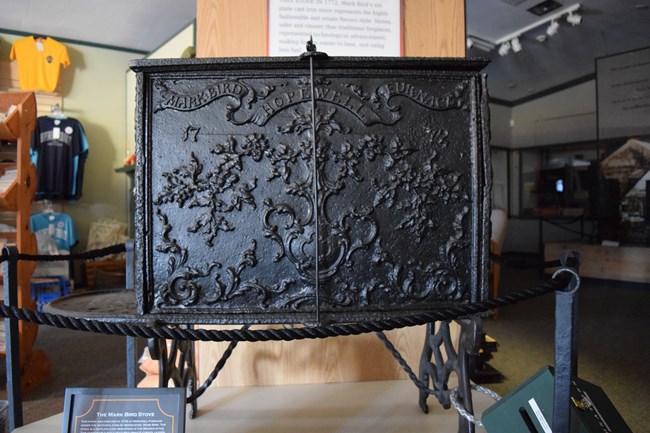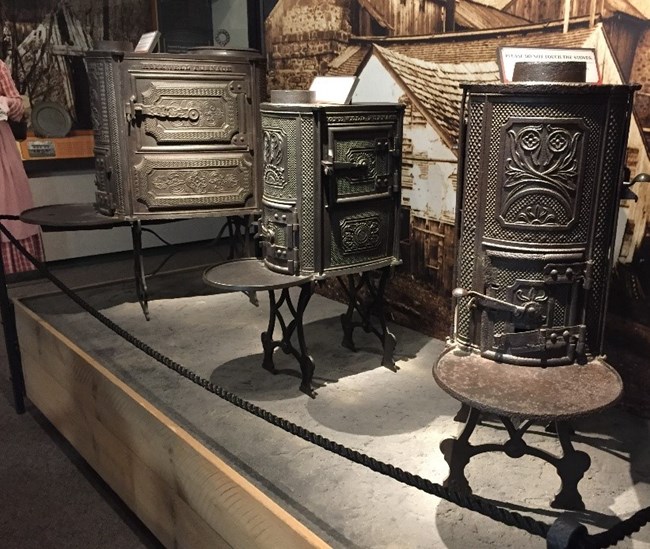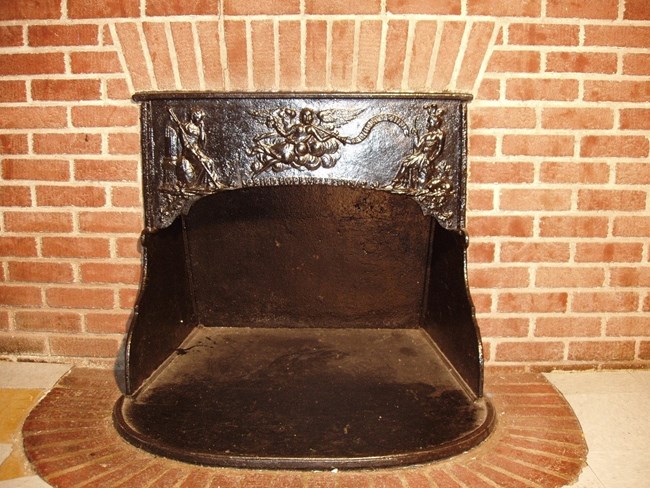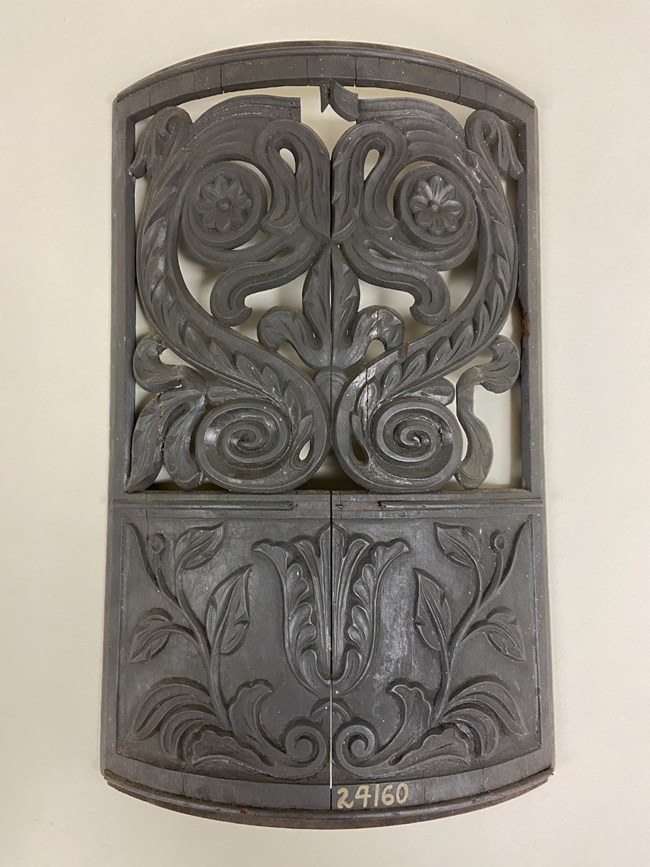Cast Iron Stove Production at Hopewell Furnace
NPS Photo 
NPS Photo
Flask-casting replaced the 18th century method of open-sand casting. In open sand casting, a wooden pattern was pressed into the sand in front of the furnace. Molton iron was run into this bed to cool, and then the plate was trimmed and brushed clean. Flask-casting used a box filled with damp sand to form a mould around a pattern. When the iron hardened, the box was opened, and the plate was removed and cleaned. From 1825 to 1844, Hopewell Furnace’s most lucrative product was stove plates. In the 18th century, 10-plate stoves gained popularity with innovations in stove technology and flask casting. At the same time, improvements in transportation allowed the furnace company to ship products to market via turnpikes, canals and railroads. New patterns were routinely introduced, and Hopewell molded numerous designs to stay desirable to customers in Albany, NY, Baltimore, MD, Portsmouth, NH, Philadelphia and Harrisburg, PA. 
NPS Photo 
Photo by Mercer Museum & Library and Fonthill Castle (BCHS) The national financial crisis known as the Panic of 1837 had a devastating effect on Hopewell Furnace and its markets in eastern cities. Hopewell survived the financial crisis but experienced increasing costs and declining demand. The Ironmaster, Clement Brooke, ended large-scale castings and focused Hopewell on producing primarily pig iron bars. These bars could be worked into wrought iron at finery forges. Hopewell mainly produced pig iron until it permanently closed operations in 1883 due to its inability to compete with steel factories. |
Last updated: February 4, 2025
